Abstract
1. The possibility that thyroid disease might result in alterations in the plasma proteins binding of drugs has been investigated by studying the binding of propranolol and isoprenaline in patients with hyperthyroidism and hypothyroidism. 2. Plasma protein binding of propranolol and isoprenaline has been measured in seven hyperthyroid patients and ten hypothyroid patients. Plasma binding was estimated by equilibrium dialysis at 37 degree C using triatiated propranolol and isoprenaline, both when the patients had thyroid dysfunction and again when they were euthyroid. 3. In the hyperthyroid group, mean propranolol binding varied from 86 +/- 1.7% when hyperthyroid to 88.4 +/- 0.8% when euthyroid. The comparable isoprenaline figures were 65.1 +/- 3.2% and 68.1 +/- 1.4% respectively. Neither difference was significant. 4. Isoprenaline binding was significantly lower (64.3 +/- 1.6%) when patients were hypothyroid than when they became euthyroid (68.8 +/- 1.2%). Propranolol binding was not altered by hypothyroidism. 5. It is concluded that clinically important alterations in free drug concentrations of propranolol or isoprenaline do not occur in hyperthyroidism or hypothyroidism.
Full text
PDF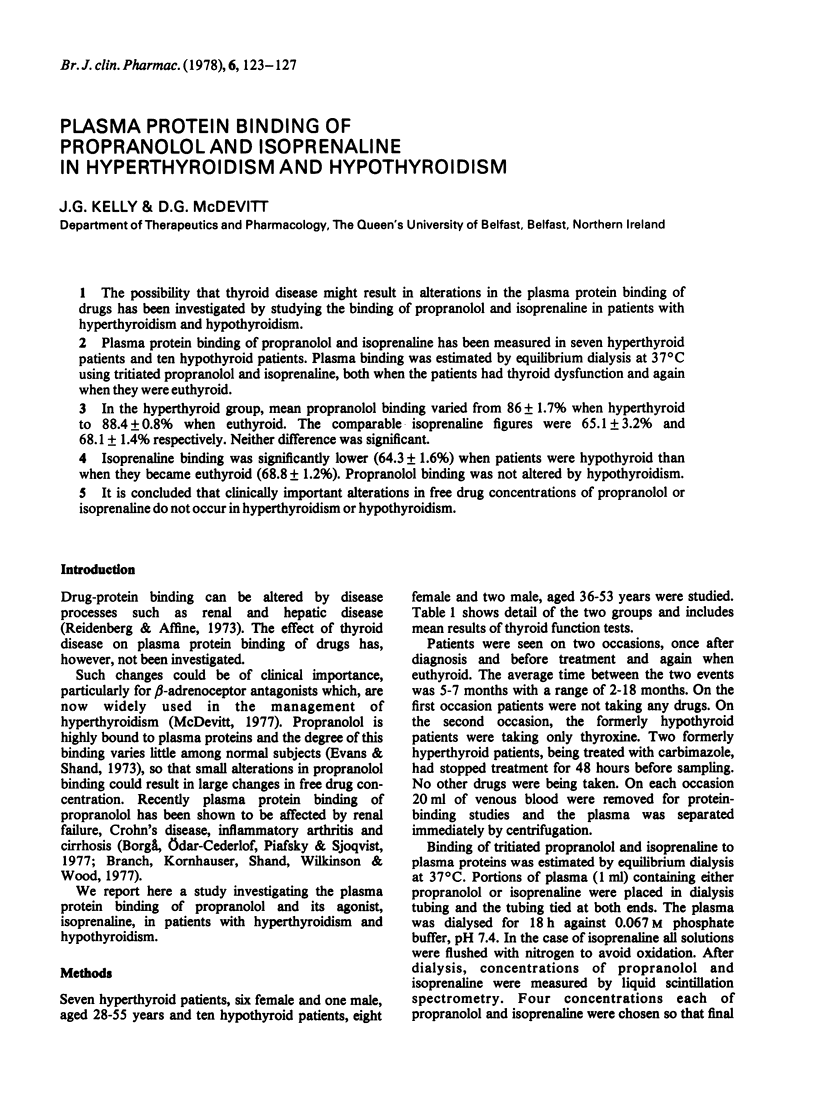
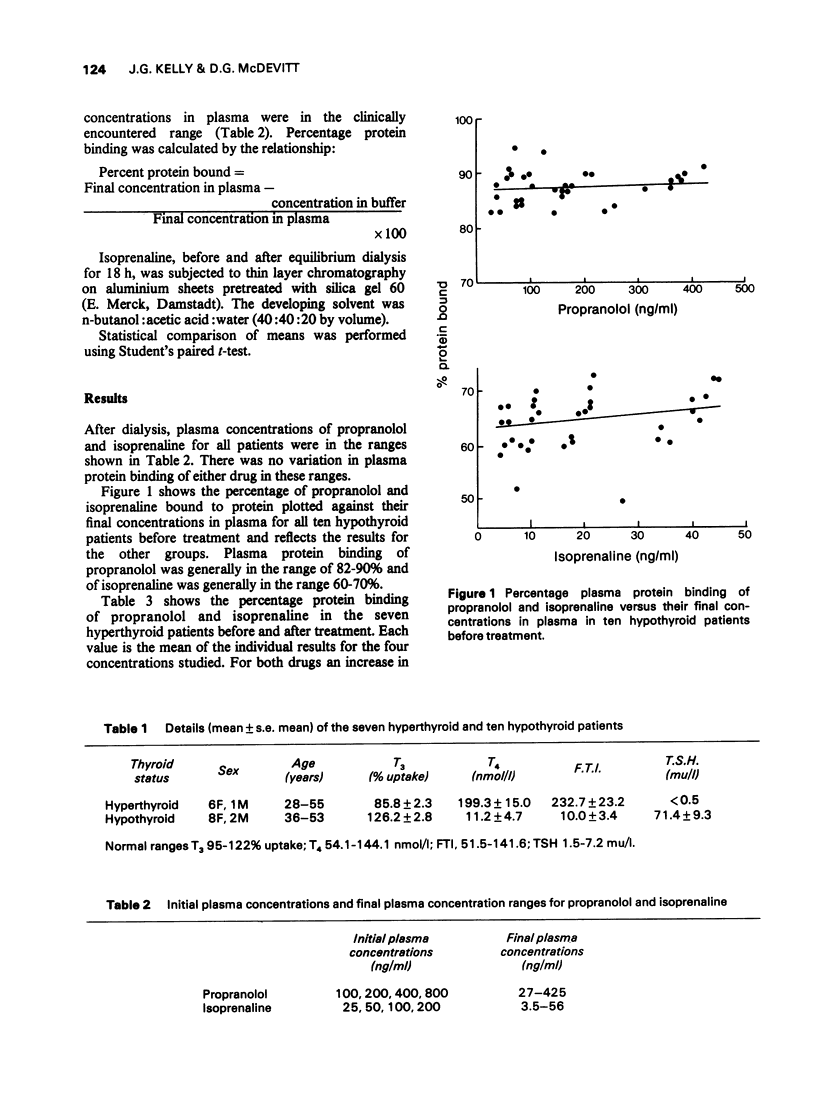
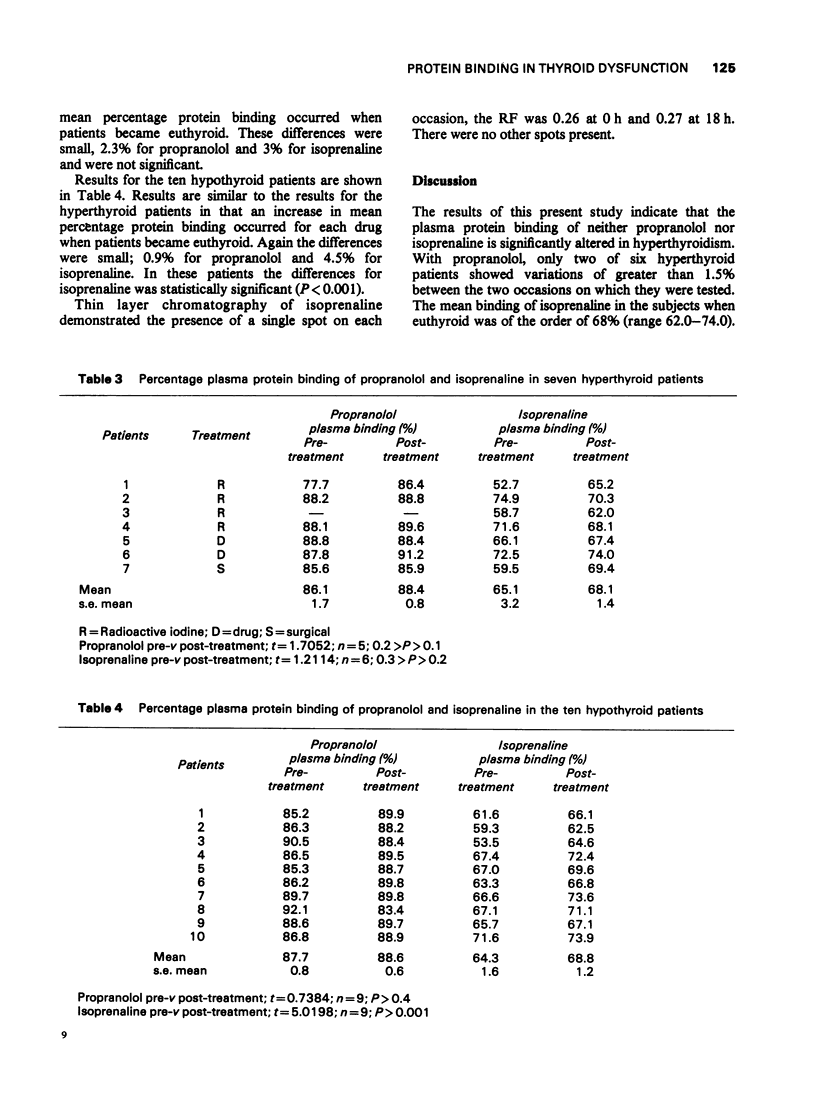
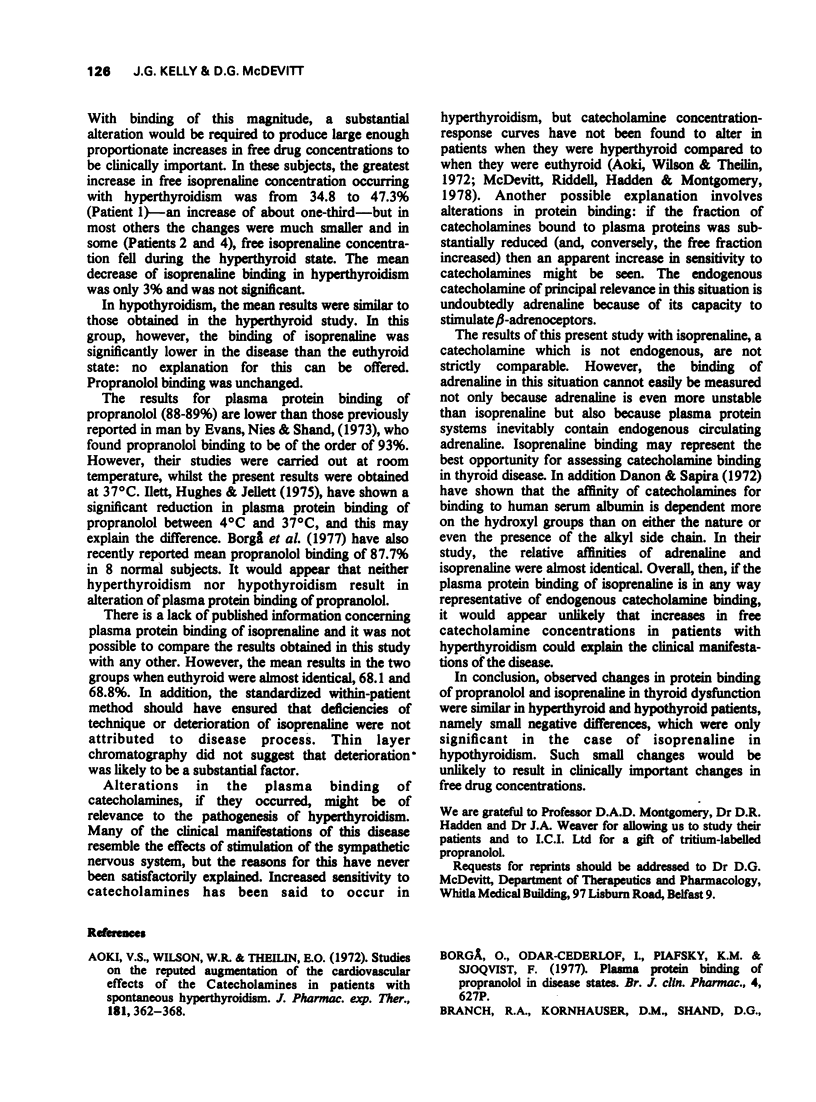
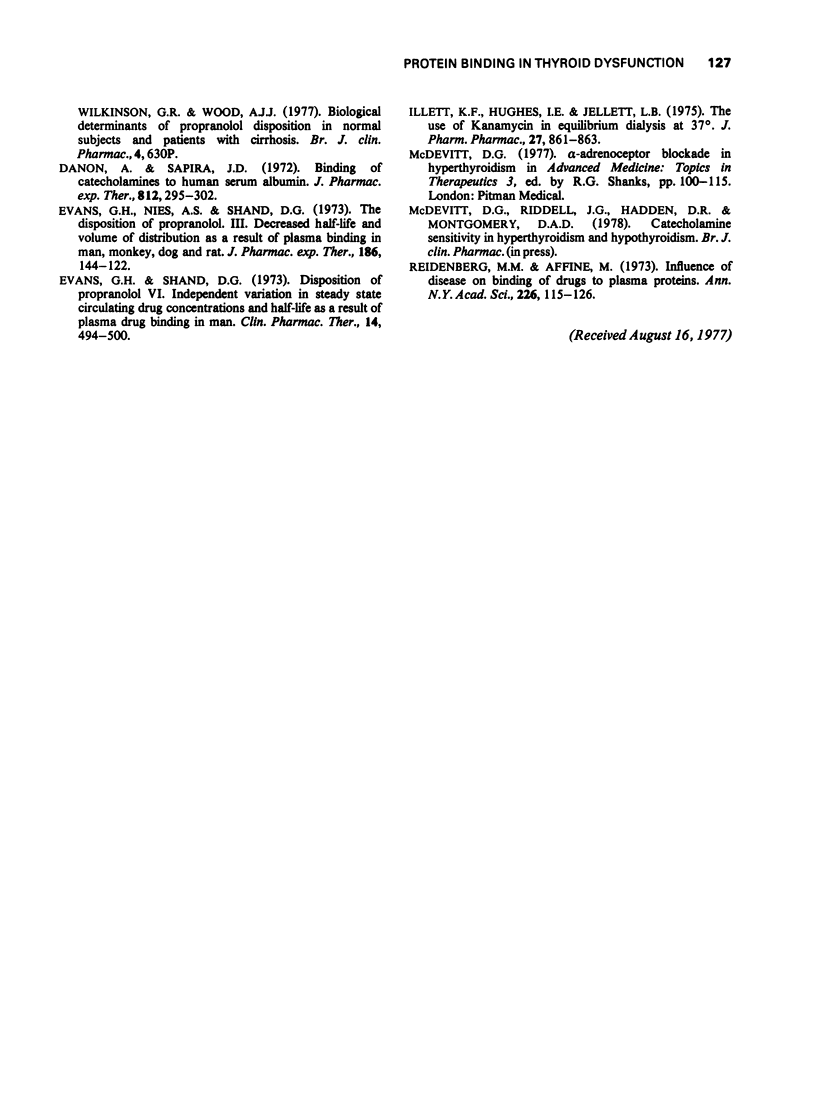
Selected References
These references are in PubMed. This may not be the complete list of references from this article.
- Aoki V. S., Wilson W. R., Theilen E. O. Studies of the reputed augmentation of the cardiovascular effects of catecholamines in patients with spontaneous hyperthyroidism. J Pharmacol Exp Ther. 1972 May;181(2):362–368. [PubMed] [Google Scholar]
- Borga O., Odar-Cederlöf I., Piafsky K. M., Sjöqvist F. Plasma protein binding of propranolol in disease states [proceedings]. Br J Clin Pharmacol. 1977 Oct;4(5):627P–628P. doi: 10.1111/j.1365-2125.1977.tb00799.x. [DOI] [PMC free article] [PubMed] [Google Scholar]
- Branch R. A., Kornhauser D. M., Shand D. G., Wilkinson G. R., Wood A. J. Biological determinants of propranolol disposition in normal subjects and patients with cirrhosis [proceedings]. Br J Clin Pharmacol. 1977 Oct;4(5):630P–630P. doi: 10.1111/j.1365-2125.1977.tb00802.x. [DOI] [PubMed] [Google Scholar]
- Danon A., Sapira J. D. Binding of catecholamines to human serum albumin. J Pharmacol Exp Ther. 1972 Aug;182(2):295–302. [PubMed] [Google Scholar]
- Evans G. H., Nies A. S., Shand D. G. The disposition of propranolol. 3. Decreased half-life and volume of distribution as a result of plasma binding in man, monkey, dog and rat. J Pharmacol Exp Ther. 1973 Jul;186(1):114–122. [PubMed] [Google Scholar]
- Evans G. H., Shand D. G. Disposition of propranolol. VI. Independent variation in steady-state circulating drug concentrations and half-life as a result of plasma drug binding in man. Clin Pharmacol Ther. 1973 Jul-Aug;14(4):494–500. doi: 10.1002/cpt1973144part1494. [DOI] [PubMed] [Google Scholar]
- Ilett K. F., Hughes I. E., Jellett L. B. The use of kanamycin in equilibrium dialysis at 37 degrees. J Pharm Pharmacol. 1975 Nov;27(11):861–863. doi: 10.1111/j.2042-7158.1975.tb10231.x. [DOI] [PubMed] [Google Scholar]
- Reidenberg M. M., Affrime M. Influence of disease on binding of drugs to plasma proteins. Ann N Y Acad Sci. 1973 Nov 26;226:115–126. doi: 10.1111/j.1749-6632.1973.tb20474.x. [DOI] [PubMed] [Google Scholar]


